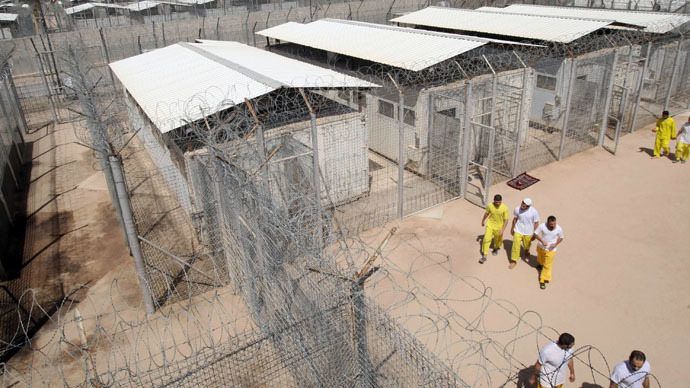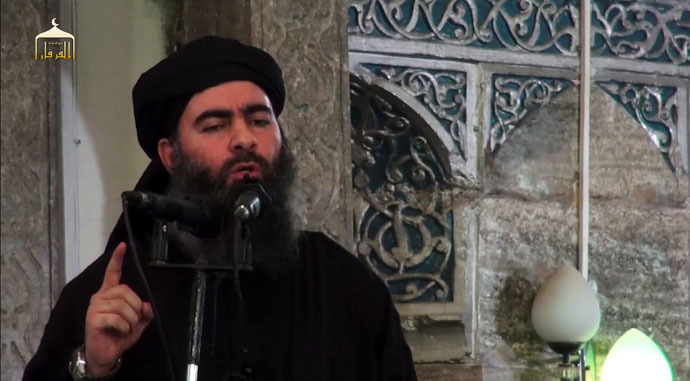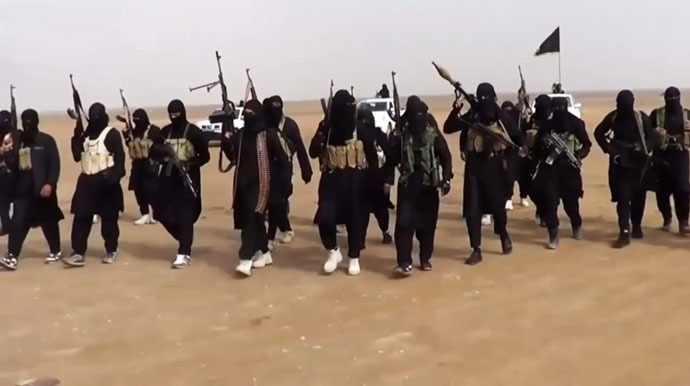ISIS leader says US prisons in Iraq led to creation of terrorist organization

A leading member of the Islamic State has revealed the group could never have been formed without the help of the US. American prison camps in Iraq gave the Islamists the perfect opportunity to meet and plan their eventual rise to power.
Ten years ago, Abu Ahmed was incarcerated at Camp Bucca, a US run prison in Iraq. In an exclusive interview a decade later to the Guardian, he reveals how the Islamic State (IS, formerly ISIS/ISIL) might never have formed if US detention centers hadn’t existed.
Abu Ahmed, who uses a pseudonym, is now one of the Islamic State’s senior leaders. He recalls how he initially feared going to Camp Bucca, but he soon realized he had arrived at a facility that was a hive of Islamist radicals.
“We could never have all got together like this in Baghdad, or anywhere else,” he told the Guardian. “It would have been impossibly dangerous. Here, we were not only safe, but we were only a few hundred meters away from the entire Al-Qaida leadership.”
The Iraqi government estimates that 17 of the most important IS leaders spent time in US prison’s from 2004-11, the Guardian reported. The inmates were released at different times and were spread across the country. However, they came-up with an ingenious way to stay in touch after being granted their freedom. They would write each other’s telephone numbers and addresses on the inside of their boxer shorts, as they had no access to paper or other electronic aids.
READ MORE: RT exclusive: From London banker to ISIS militant - one man's terror trail
After Abu Ahmed was released, the first thing he did when he was safe in Baghdad was to undress, then carefully take a pair of scissors to his underwear and cut away the elastic where everything was written down. “I cut the fabric from my boxers and all the numbers were there. We reconnected. And we got to work.” Across Iraq, other ex-inmates were doing the same. “It really was that simple,” Abu Ahmed said, as he recalled how his captors had been outwitted. “Boxers helped us win the war.”

During his time at Camp Bucca, Abu Ahmed also came face to face with the current IS leader, Abu Bakr Al-Baghdadi. He says Al-Baghdadi proved he had a direct lineage to the Prophet Mohammed and also had a PhD in Islamic studies from the University of Baghdad, which played a key role in being able to maneuver himself into a position of power.
“Baghdadi was a quiet person. He had a charisma. You could feel that he was someone important. But there were others who were more important. I honestly did not think he would get this far,” Abu Ahmed told the Guardian.
READ MORE: ISIS leader's call to Muslims: Go to Iraq and Syria 'to help build Islamic state'
“The Americans never knew who they had,” Abu Ahmed continued, speaking of Al-Baghdadi. However, the US army was not alone as most of Baghdadi’s fellow prisoners – some 24,000 men, divided into 24 camps – seem to have been equally unaware.
However, the current IS leader certainly managed to create a rapport with the US Army. He was often seen as a go-between to settle disputes between rival factions in the prison camp.
“But as time went on, every time there was a problem in the camp, he was at the center of it. He wanted to be the head of the prison – and when I look back now, he was using a policy of conquer and divide to get what he wanted, which was status. And it worked.”

READ MORE: Pentagon cannot confirm if ISIS leader al-Baghdadi wounded in airstrike
By December 2004, Baghdadi was deemed by his jailers to pose no further risk and his release was authorized. He eventually left Camp Bucca in 2009.
“He was respected very much by the US army,” Abu Ahmed said. “If he wanted to visit people in another camp he could, but we couldn’t. And all the while, a new strategy, which he was leading, was rising under their noses, and that was to build the Islamic State. If there was no American prison in Iraq, there would be no IS now. Bucca was a factory. It made us all. It built our ideology.”
Camp Bucca was one of a number of US prisons in Iraq, but the most infamous was Abu Ghraib, which closed in April.
It came to international attention in early 2004, when it was revealed that US troops physically and sexually abused, tortured, raped, and killed inmates. The disturbing images that came out of the facility went a long way to fueling Iraqi fury with American forces, and forever changed the perception of the war.
Hundreds of prisoners escaped from Abu Ghraib last year when nearby Fallujah fell under the control of the Islamic State. An attack on Abu Ghraib and Taji prisons freed more than 500 prisoners, including a number of senior militants and killed 120 Iraqi guards and SWAT forces, an Al-Qaeda spokesman told reporters last year.












